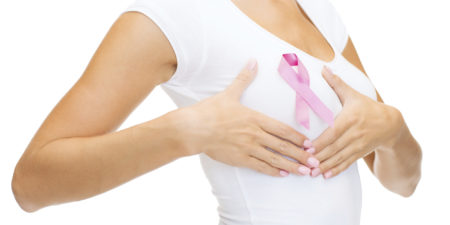
A medical expert, Dr Adedotun Aladeojebi, has said that breast cancer is the commonest cancer in women globally and, as such, its early detection is important to ensure individuals’ survival from such deadly cancer.
Dr Aladeojebi, speaking at the anniversary of the Young Women Christian Association, Methodist Cathedral, Agbeni, Ibadan, stated that the risk of breast cancer increases with age in women.
Although genes that increase a woman’s risk of developing breast cancer have been identified, he stated that breast cancer tends to runs in some families.
“If a close female relative has had breast cancer, there is an increased risk of developing breast cancer,”he declared.
The expert, who said early menstruation, late menopause, delay in giving birth and hormone therapy can also predispose to breast cancer, women should be wary of symptoms of breast cancer.
These symptoms include a breast lump or mass that developed recently that feels different from the surrounding breast tissues; breast pain, nipple discharge other than breast milk, and bloody discharge from the nipple.
Others are a sudden change in the shape or size of the breast; changes to the appearance of the skin on the breast and a lump or swelling under the arm.
Aladeojebi said a man can also develop breast cancer, saying, about 2000 men by estimate were diagnosed with breast cancer in 2015 and about 400 deaths.
To ensure early detection, of breast cancer, he advised monthly self-breast examination and a periodical clinical breast examination.
He also recommended that women between ages 40 and 44 have mammogram examination done once in two years while women between ages 45 and 54 should do the test yearly.
On cervical cancer, Aladeojebi urged all women to begin cervical cancer screening at age 21 while every child between the age of nine and 13 should be vaccinated with human papillomavirus (HPV) vaccine.
The medical expert listed causes of cancer to include personal and dietary factors (smoking, sun tanning, obesity, lack of exercise and alcohol consumption); environmental factors (solvents, pesticides, air pollutants, toxic products like cosmetics); and family tendencies.
WATCH TOP VIDEOS FROM NIGERIAN TRIBUNE TV
- Relationship Hangout: Public vs Private Proposals – Which Truly Wins in Love?
- “No” Is a Complete Sentence: Why You Should Stop Feeling Guilty
- Relationship Hangout: Friendship Talk 2025 – How to Be a Good Friend & Big Questions on Friendship
- Police Overpower Armed Robbers in Ibadan After Fierce Struggle





